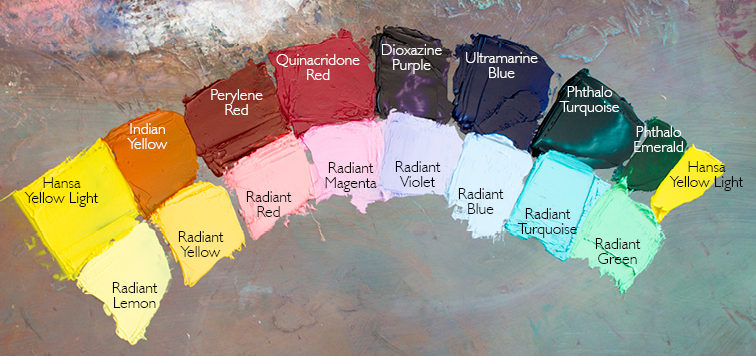Painting with Radiant Colors
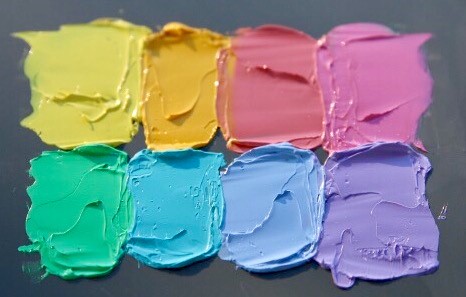
Gamblin Radiant Colors: (clockwise from top left) Radiant Lemon, Radiant Yellow, Radiant Red, Radiant Magenta, Radiant Violet, Radiant Blue, Radiant Turquoise, Radiant Green
Vibrant. Subtle. Harmonious.
Gamblin Radiants work together as a system of accent colors, enabling artists to easily and predictably punch-up the color and intensity in their paintings. When used in mixtures, the Radiants allow painters to warm-up or cool-down colors without darkening them. Radiants can also neutralize colors into more nuanced mixtures.
Gamblin Radiant Colors are composed of eight intense tints – mixtures of pure color and white, at Value 7 on the Munsell System. In this page, we share how the Radiant Colors came to be and we showcase how painters utilize Radiant Colors in their work.
Development: a Radiant collaboration

Wolf Kahn’s Studio
Gamblin Radiant Colors were developed out of Robert Gamblin’s friendship with painter Wolf Kahn. Wolf’s landscapes are spoken in the language of pure color – the natural world is expressed through a vibrant palette and bold shapes. Wolf is just as fluent in working with soft pastels as he is in oil paint. As pastels are a “dry” medium, one would have sticks of pure pigment (Ultramarine Blue, for example) plus several tints of that pigment at different values. Wolf took the same approach to his oil color palette – incorporating pure colors from the tube alongside lighter tints. Robert worked with Wolf in developing the eight intense tints that became known as Radiants.
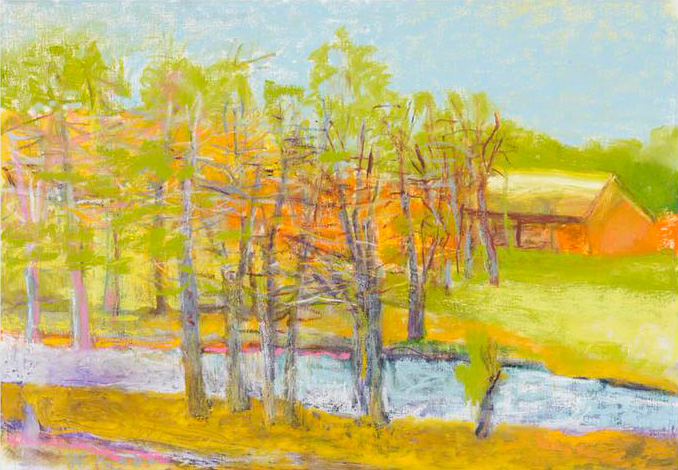
Wolf Kahn, A Brook Flows By It, oil on canvas 36″ x 52″
Modern Tints
Each of the Radiant Colors are tints of modern organic pigments. The one exception is Radiant Blue, which is a tint of Ultramarine. Modern organic pigments retain their intensity in tints in mixtures, which is the reason the Radiant Colors maintain such a high chroma at their light values. It’s also worth noting that these modern organic pigments are transparent in nature, yet the Radiant Colors are all opaque, due to the addition of titanium white in their formulas.
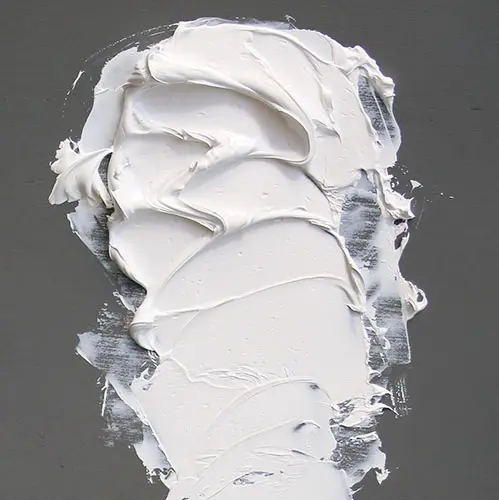
Radiant White: The brightest of whites
Gamblin Radiant White is pure titanium dioxide bound in safflower oil.
Simply put, Radiant White is the brightest white oil color we make. Safflower is paler than linseed oil which means that Radiant White is not only brighter, but it is more neutral in temperature compared to linseed oil-bound whites. With its high load of titanium dioxide, Radiant White reflects back 97% of the light that falls on it.
Without modification, Radiant White is our most brushable white – meaning it has the least amount of resistance under the brush or painting knife. Radiant White is also slower drying than other whites, making it useful for painters who wish to work wet into wet or otherwise desire more open time.
Techniques for painting with Radiant Colors
Lori Putnam
Colored whites
Radiant Turquoise, Radiant Violet, and Radiant Blue have become my first “go-to” colors for lightening values when cooler colors are needed. Rather than heading straight for my Titanium White, these colors serve me better because all three are cool, very light, and intense and they help with neutralizing colors. For example, if I am trying to neutralize Napthol Red and do not want a dark, warmer color (as I would get if mixed with its complement, Green), I add Radiant Turquoise. The result is a rich, cooler, mid-value color.
Napthol Red mixed with Radiant Turquoise:
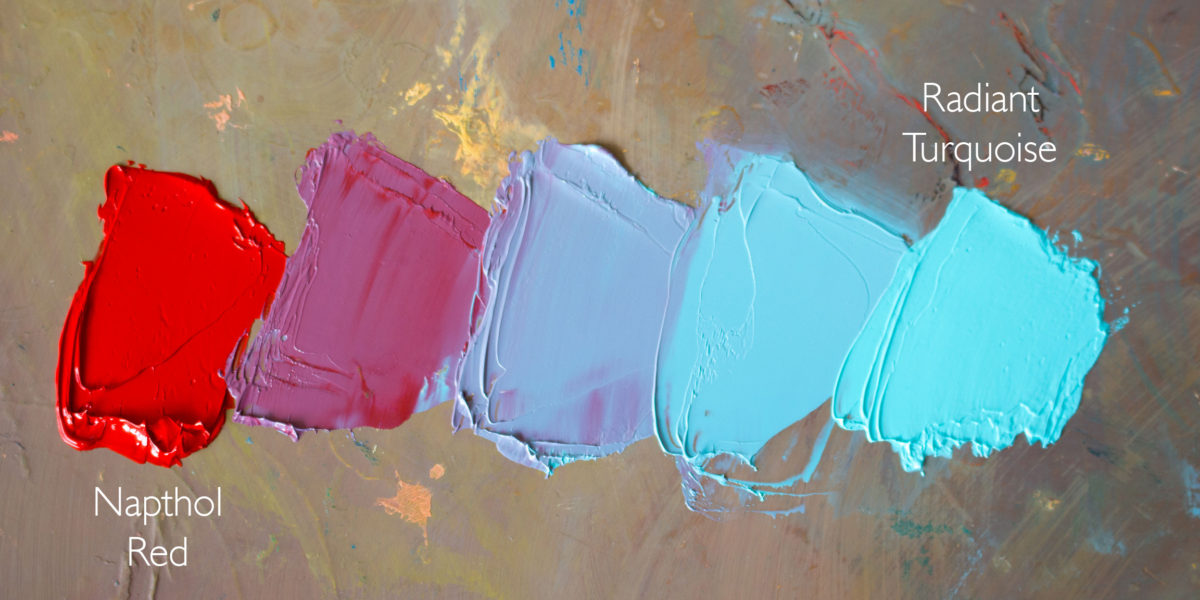
Similarly, I can get a more natural violet by mixing Radiant Blue with my Napthol.
Napthol Red mixed with Radiant Blue:

Mixing with Radiant Turquoise vs. Titanium White:
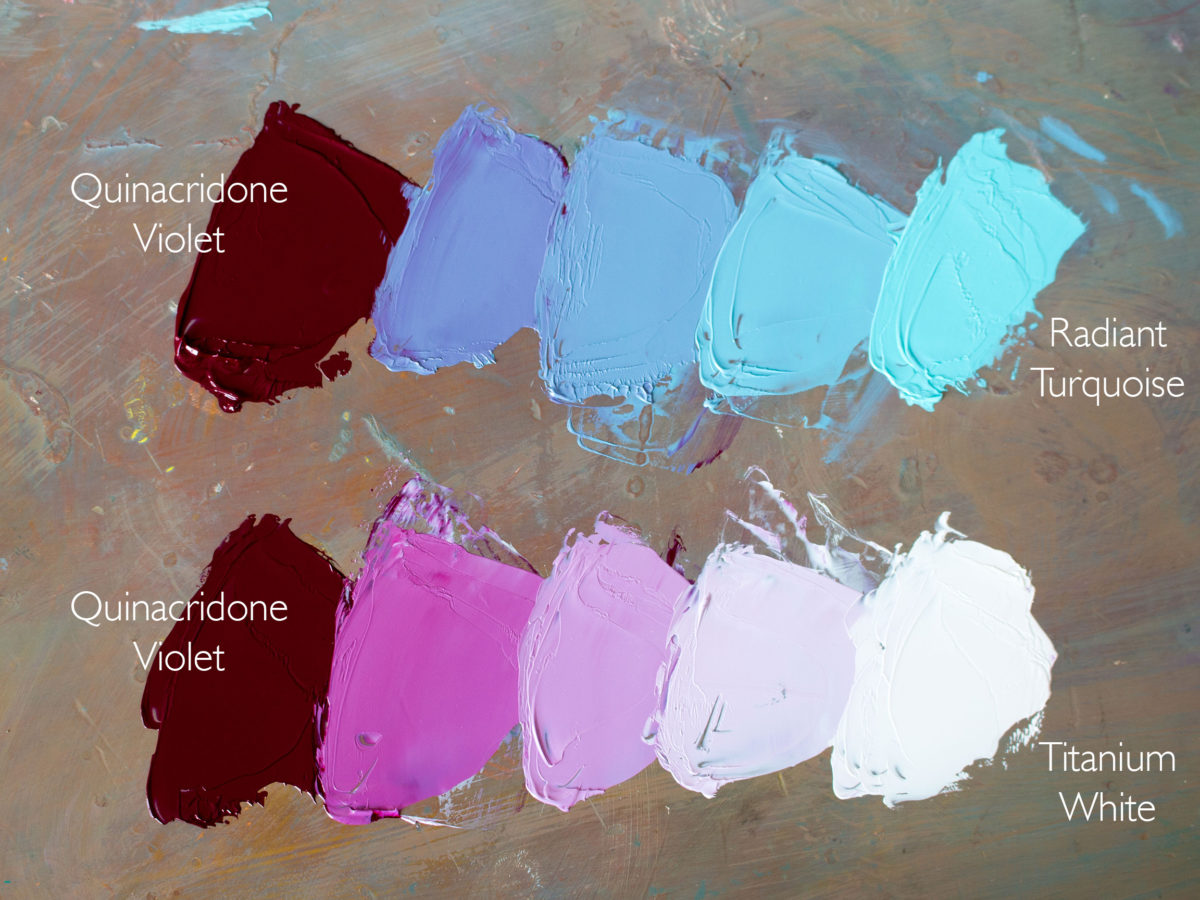
By lightening Quinacridone Violet with Radiant Turquoise instead of Titanium White, I will get more nuanced color mixing. The mixture of Quinacridone Violet and Radiant Turquoise passes through the blue section of the color wheel, yielding beautifully subtle mid-value blues. When Quinacridone Violet is mixed with straight white, the corresponding tints remain in violet hue family.
Here I use mixtures of Quinacridone Violet and Radiant Turquoise in this painting of snow on a sunny day:
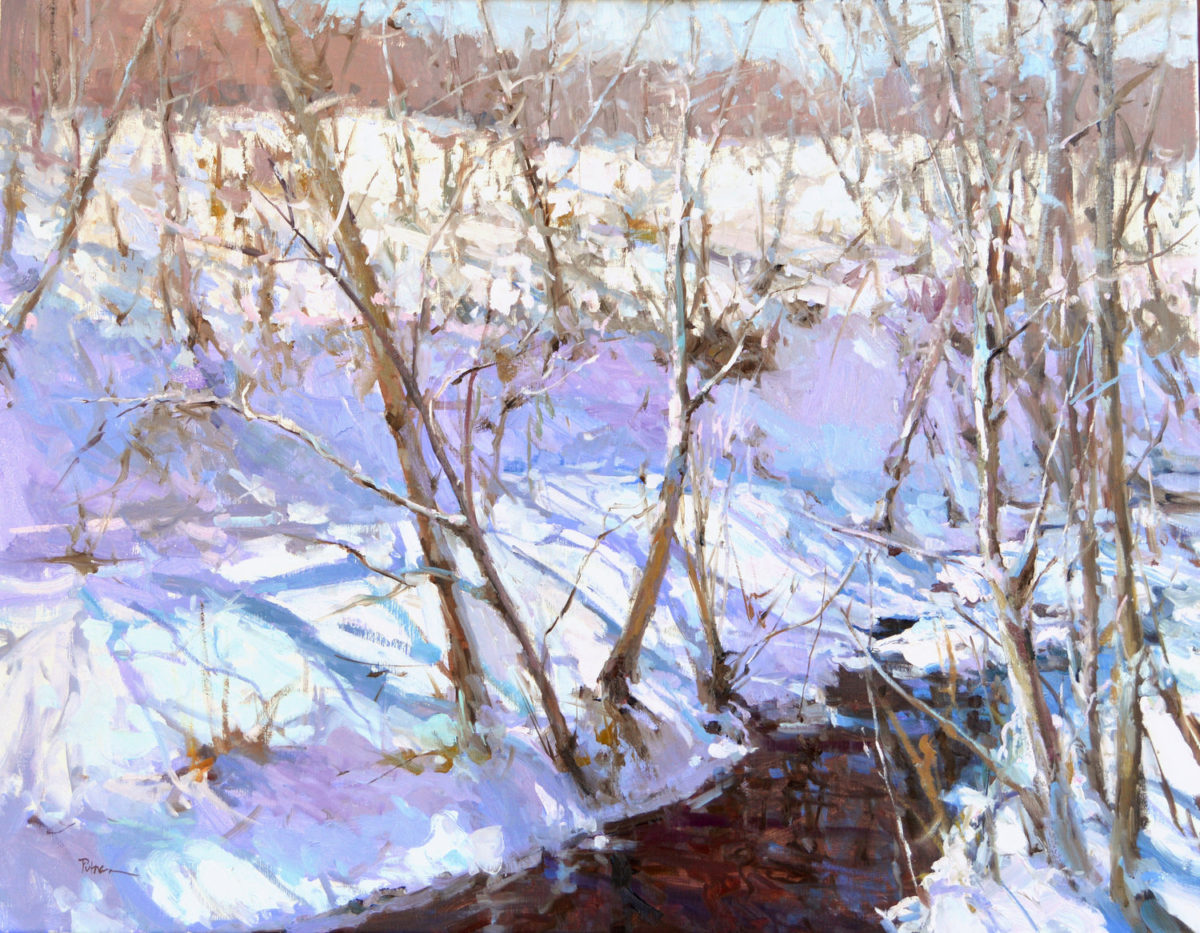
Lori Putnam, Blurred Lines, oil on linen, 28″ x 36″
Warm and cool Radiant mixtures
Try this: mix Cadmium Orange with Radiant Turquoise in one pile and with Radiant Violet in another. These two greys will be the same value, but one will appear cooler and the other warmer. When placed next to one another in the distant landscape, the beauty of a late afternoon mountain comes to life.
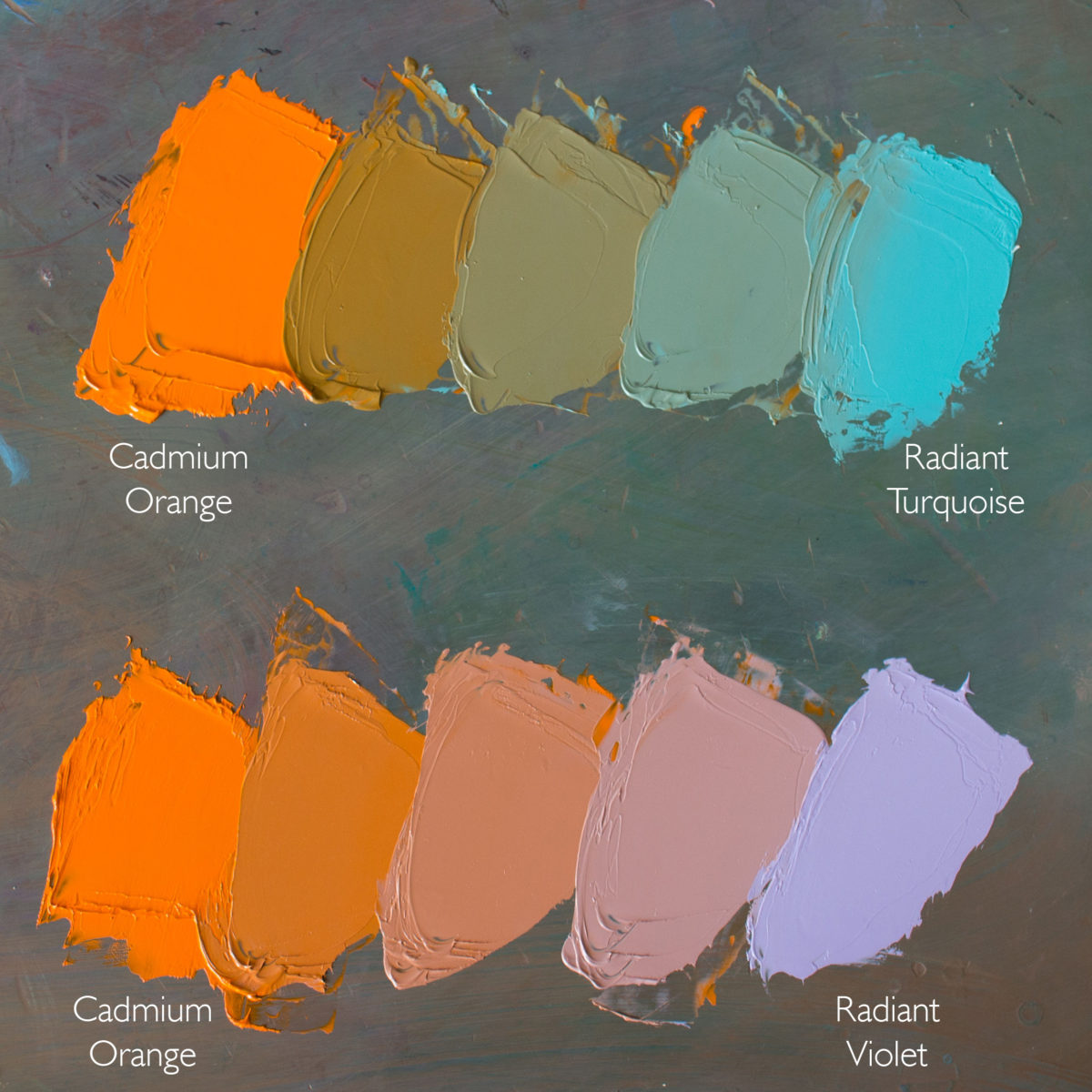
Anna Rose Bain
More than Radiant
When I started experimenting with Gamblin’s line of Radiant colors, I expected they would end up in the “occasional use” drawer. To my surprise, I found myself employing them in nearly every painting—especially figurative works—with Radiant Green and Radiant Turquoise claiming permanent spots on my palette. Some of the others (like Radiant Red and Violet) join the party almost as often. Whenever I teach or give a portrait demo, the first thing people ask me about are “those bright colors” on my palette and how to use them.
I find Radiant Green and Radiant Turquoise particularly useful in adjusting the hue and/or temperature within a painting, while maintaining light values. Others in the Radiant line, such as Radiant Violet and Radiant Red, are almost impossible to substitute. The Radiant Violet is very cold in color temperature. I’ve seen nothing else like it on the market. Depending on the nature of the light source, Radiant Violet and/or Radiant Red are often the perfect choice for painting the brightest highlights on a model without having to default to titanium white.
In this passage of a recent alla prima portrait (below), you can see a subtle light blue along the temple area and around the eye socket. In those areas where there is a plane change, gradually turning away from the light, the color becomes cooler, but not necessarily darker. This was a perfect opportunity to use Radiant Turquoise.

Anna Rose Bain, Kat Profile
In addition to creating luscious skin tones, the Radiant line is great for nailing local color. The little boy in this portrait (below) was wearing a white and sea-green shirt, and sat outdoors on an overcast day (so cool light). Instead of mixing white with Phthalo or some other darker color, I was able to use Radiant Green almost straight out of the tube for that shirt. Additionally, you can see passages in his face and throughout the painting (leaves, stone steps, etc.) where I mixed the green and turquoise in, creating an overall harmony for the piece.

Anna Rose Bain, Simon

Anna Rose Bain, Simon (detail)
In this portrait of Colquitt (below), I used Radiant Violet all over the background (in front of a light transparent wash of ivory black), and for the bold highlight in the middle of his forehead.
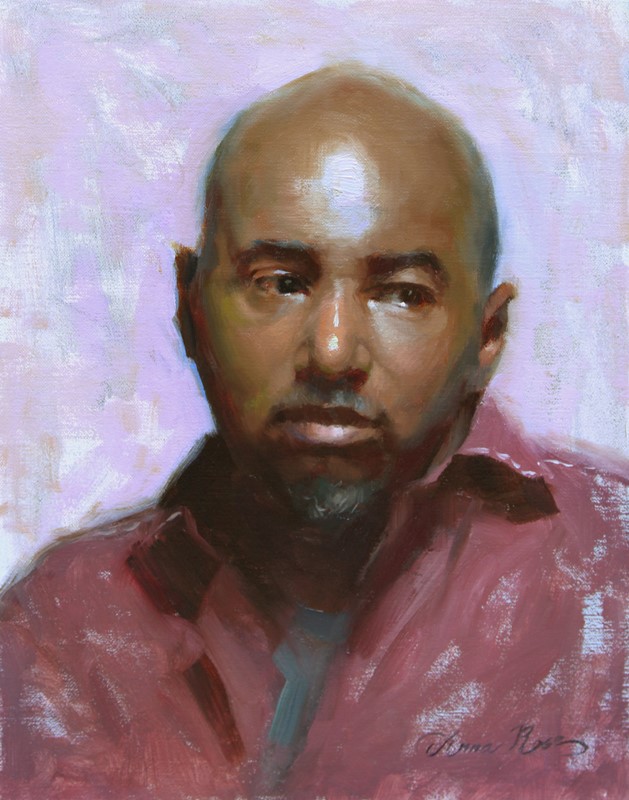
Anna Rose Bain, Colquitt
Radiant colors are invaluable for cooling down a color mixture without getting a darker value and for obtaining bright highlight or local colors without having to use a ton of white. Whether or not you are painting from life, the Radiant colors are wonderful shortcuts for all of your “high key” needs.
Featured artists and contributors:

